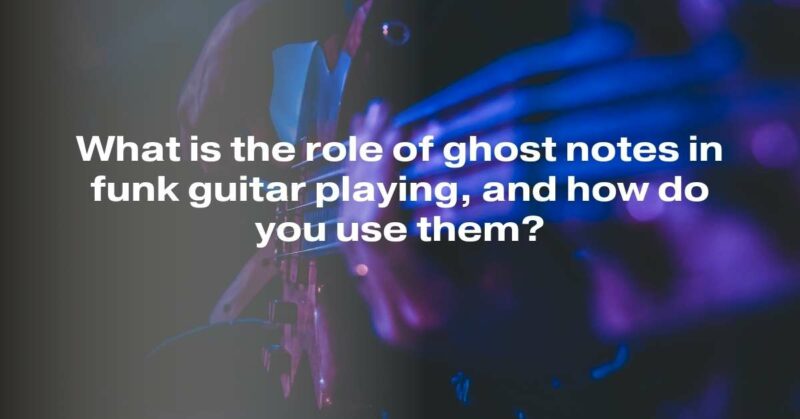Funk music is all about the groove, that irresistible rhythm that gets your body moving. At the heart of this groove lies an often-underappreciated element: ghost notes. In funk guitar playing, ghost notes are the secret sauce that adds depth, texture, and an infectious feel to the music. In this article, we’ll delve into the fascinating world of ghost notes, exploring their role in funk guitar playing and how you can use them to take your groove to the next level.
Understanding Ghost Notes
Ghost notes are the subtle, muted, and percussive sounds produced by lightly touching the strings with the fretting hand or damping them with the picking hand. These notes are usually inaudible or barely audible but play a pivotal role in creating the rhythmic complexity that defines funk music.
The Role of Ghost Notes in Funk
1. Rhythmic Texture:
Ghost notes provide a crucial layer of rhythm to funk guitar playing. They fill in the gaps between the main accents, creating a dynamic and syncopated feel. Funk music is known for its intricate rhythms, and ghost notes help maintain the groove by adding a sense of constant movement.
2. Articulation and Dynamics:
Ghost notes allow guitarists to articulate their playing with finesse. By controlling the pressure on the strings, players can vary the volume and attack of ghost notes, providing contrast to the more pronounced, accented notes. This adds depth and dynamics to the music, making it more expressive.
3. Groove Lock:
Funk music is all about tight rhythm sections, and ghost notes help lock the guitar into the groove with other instruments like bass and drums. They act as a glue that holds the rhythm together, ensuring that every instrument is in sync and the groove is undeniably infectious.
How to Use Ghost Notes in Funk Guitar Playing
1. Muting Techniques:
To produce ghost notes, you’ll need to master muting techniques. Use the palm of your picking hand to lightly touch the strings near the bridge while you’re playing. Alternatively, use your fretting hand to slightly release the pressure on the strings without fully releasing them. Experiment with different degrees of muting to find the right balance for your desired groove.
2. Syncopation:
Ghost notes are often played in between the main beats, creating syncopation. Try experimenting with different patterns and placements of ghost notes within a groove. Start with simple patterns and gradually increase complexity as you become more comfortable with the technique.
3. Dynamics:
Pay attention to the dynamics of your ghost notes. You can control their volume by adjusting the pressure of your palm or fretting hand. Practice playing ghost notes with varying degrees of intensity to develop a nuanced sense of dynamics.
4. Groove with the Rhythm Section:
To make the most of ghost notes, practice playing alongside a metronome, drum machine, or a live rhythm section. This will help you develop a strong sense of timing and ensure that your ghost notes groove seamlessly with the rest of the band.
Conclusion
Ghost notes are the hidden gems of funk guitar playing, adding depth, groove, and personality to your music. By mastering the art of muting and syncopation, you can unlock the full potential of ghost notes and take your funk guitar playing to the next level. Remember, the magic of funk lies in the groove, and ghost notes are your ticket to becoming a true groove master. So, keep practicing, keep grooving, and let those ghost notes do their funky work.


